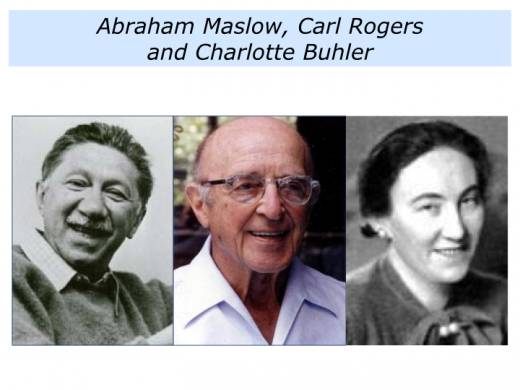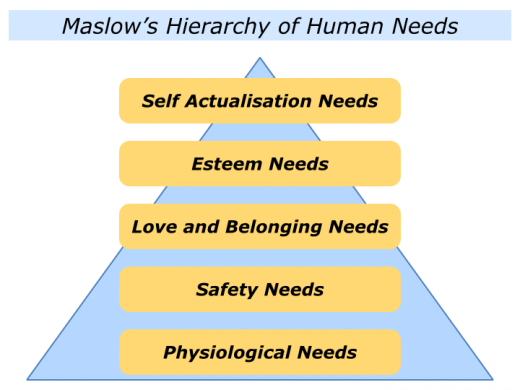Humanistic psychology was considered to be the Third Force in psychology when it became popular from the 1940s onwards.
One force was Behaviourism. This saw human beings as strongly moulded by their conditioning. People behaved in ways that were dependent on rewards and punishment.
Behaviours could be changed by giving people a certain stimulus – whether it be pleasure or pain – and this would trigger a certain response.
Another force was Psychoanalysis. This saw human beings as driven by their past experiences. People behaved in ways that stemmed from feelings about their childhood or other experiences.
Growth was dependent on people understanding both their unconscious and conscious drives. This was particularly so, for example, if they continually failed in particular areas of life.
People could gain understanding through what some called the talking cure. This involved talking through their experiences with a doctor who had gone on to become a psychiatrist.
The ethos was that of a medical model. People who got into difficulties were sick. They could be helped to grow by understanding their behaviour and adopting other strategies in the future.
Humanistic psychology rebelled against both the conditioning and medical models. It saw human beings as basically good. People could develop by being true to themselves. Environment was crucial.
Abraham Maslow, for example, believed that people were more likely to grow if their basic needs were met. They could then take charge of their futures, be creative and grow towards fulfilment.
Existential psychology had some impact on Humanistic psychology and was developed at approximately the same time.
It saw human beings as neither good nor bad. People shaped their lives by the choices they made and each choice had consequences. They could take responsibility for choosing their attitude and actions.
People who were true to their values – and who lived in good faith – were more likely to feel good. Those who failed to follow their values – and lived in bad faith – were more likely to feel troubled. People could grow by finding and following their purpose.
Key People In Humanistic Psychology
Abraham Maslow, Charlotte Buhler and Carl Rogers were some of the early pioneers in Humanistic psychology.
They were followed by many other people who applied the approach in therapy, counselling, the work place, sport and other fields. Virginia Satir, for example, used the humanistic growth model when working with families and other systems.
Abraham Maslow is probably the person most people associate with the humanistic approach. Disillusioned by studying sickness, he began interviewing people who he considered healthy.
He was particularly interested in people who had what he called peak experiences. These were moments when they were fully absorbed in an activity and, in some cases, delivered great results.
Maslow believed that human beings had a natural drive to what he called self actualisation. They were more likely to be fulfilled if their basic needs were met. This led to his famous hierarchy of needs.
People began by aiming to satisfy their physiological and safety needs. They then sought feelings of love and belonging.
Achieving these made it more likely they would gather self esteem, perhaps by being creative or successful. This would lead to them aiming to achieve self actualisation or, as Charlotte Buhler put it, fulfilment.
Maslow said that human beings could become arrested if their needs at a certain level were not satisfied. Satisfying the needs at each level made it more likely they would ascend and eventually become actualised. He was later criticised for giving people a licence for self indulgence.
Maslow was dismayed by how he had been misinterpreted. He put great emphasis on the importance of helping others. He believed it was possible to build societies that enabled all people to be given the chance to satisfy their human needs.
Carl Rogers is a name known to everybody who has done a counselling course. Today it is hard to realise how revolutionary his ideas were in the 1930s and 40s.
In those days the medical profession treated people with psychiatric difficulties as patients. The doctor saw the patient, made a diagnosis and prescribed a treatment.
Few sat down with a troubled person to encourage them to clarify their feelings, set goals and take responsibility for shaping their future.
Psychoanalysis was an option for the rich, but few people had the opportunity of basic counselling.
Carl Rogers changed all that. He was, as one book called him, ‘The quiet revolutionary’. He outlined what he saw as the core conditions for building a good therapeutic relationship. He saw the helper’s role as:
To be congruent: to be genuine and honest with the client.
To show empathy: to understand and experience the world from the client’s point of view.
To have unconditional positive regard: to show respect and accept the person as they are, rather than be judgemental.
This may sound basic: but it was radical for an era in which the doctor, psychiatrist or other expert was expected to stay aloof.
Carl even moved away from the notion of clients – eventually calling his work the person centered approach. He believed:
The person – who happened to be a client – had a drive towards self actualisation.
People who pursue this drive successfully are more likely to become psychologically healthy. Those who don’t may experience problems of living. These might be expressed in a variety of symptoms.
The helper’s role was to create an encouraging environment that facilitated the person’s growth.
They could achieve this by being genuine, showing empathy and having unconditional positive regard – what he called the core conditions.
The person would feel valued, encouraged and be able to grow.
They were then more likely to be their real self, set goals and work towards fulfilling their potential. They could pursue their drive towards self actualisation.
Carl explained that, during in his counselling career, he met people who displayed many different symptoms.
These were responses to what he called problems of living. Considering his troubled clients, he said:
“(Everybody) has the same problem, in a sense – the problem of finding the right path, of acting according to one’s better inner nature …
“It seems to me that at bottom each person is asking:
“‘Who am I, really? How can I get in touch with this real self, underlying all my surface behavior? How can I become myself?’”
Here is Carl talking about the importance of creating the right conditions when meeting a client.
Charlotte Buhler grew up and studied in Germany, before moving to Vienna, which was then the cradle of many theories about human development. She and her husband fled from the Nazis and eventually found work in America.
Leading a full life, Charlotte raised a family, became a professor of psychology and was a leading light in the Humanistic Psychology movement. She presided over the first International Humanistic Psychology conference in Amsterdam in 1970.
James Bugental, a colleague, wrote the following tribute to her.
“Charlotte Buhler was a very real and at times a very formidable person who knew her own mind and set about doing things the way she believed they should be done.
“She could be imperious, humble, tough, gentle, petty, generous, formal, companionable, creative, curiously blind, and a whole array of other ways.
“In short, Charlotte Buhler was a fully rounded human being. Yet not all of her attributes were as balanced as that list suggests.
“Charlotte was seldom boring, often courageous. She was usually on the move, active, doing, involved.
“She never seemed to have less than four important projects going at the same time.
“When she was in a room, you knew it; and when she was a part of a task group – be it a committee, a board of some kind, a group of authors – she was an influential part.”
Charlotte believed that people aimed towards fulfilment. They could achieve this by being true to themselves, using their gifts and living a meaningful life.
She believed that each human being had a core self and had four basic tendencies. These included:
To strive for personal satisfaction.
To sometimes limit themselves by adapting in order to fit-in, belong and gain security.
To strive towards self and creative expression.
To strive towards upholding and integrating their inner order
A person could integrate these tendencies by being true to their core values – rather than over-adapting to other influences – and expressing themselves in a fulfilling way.
Humanistic psychology has obviously had its critics. It has made many valuable contributions, however, particularly in exploring people’s basic needs and how they can work towards fulfilling their potential.





Leave a Reply